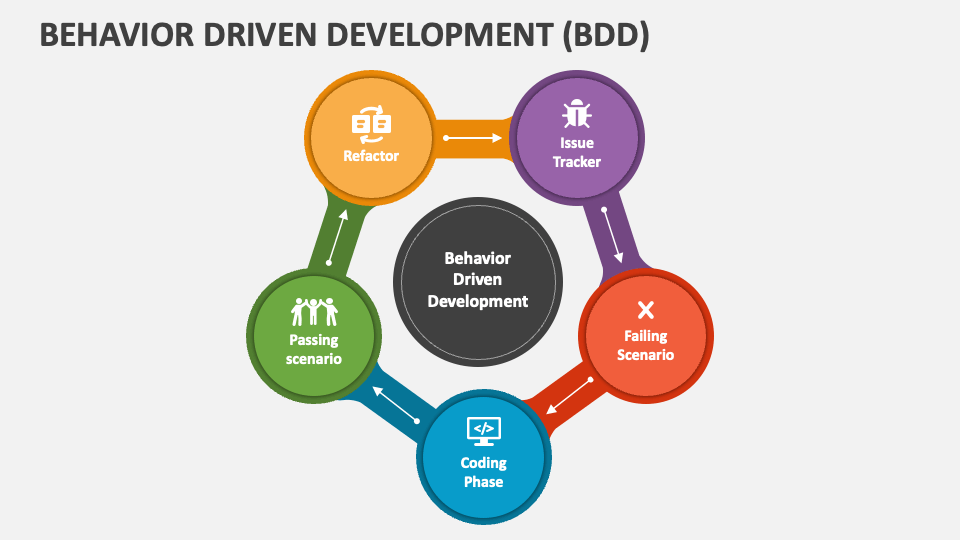In the realm of software development, Behavior-Driven Development (BDD) has emerged since a prominent methodology, particularly when applied to complex domains like artificial intelligence (AI). BDD emphasizes collaboration between developers, testers, and business stakeholders, aiming to enhance understanding and guarantee that software provides the desired final results. This article explores a prosperous implementation of BDD in AI-powered software projects through a detailed situation study, demonstrating the benefits, challenges, and even overall impact.
Backdrop
Company Profile:
The situation study focuses about TechnoVision, a mid-sized software development organization devoted to AI options. TechnoVision’s portfolio involves AI-driven applications inside healthcare, finance, and retail. In read review to growing customer demands and more and more complex projects, the corporation sought a more efficient development method to align specialized deliverables with organization objectives.
Project Review:
The project below review involves typically the development of the AI-based predictive stats platform for the large retail consumer. The platform’s target was to evaluate consumer behavior plus forecast inventory must optimize stock ranges and reduce wastage. The project needed extensive collaboration between data scientists, builders, business analysts, in addition to the client’s stakeholders.
Initial Problems
TechnoVision faced several difficulties prior to taking on BDD:
Misalignment of Expectations: Traditional enhancement methodologies led to frequent misunderstandings in between stakeholders as well as the technological team regarding job requirements and anticipated outcomes.
Communication Breaks: The complex mother nature of AI tasks often resulted in fragmented communication, with technological jargon creating obstacles between developers and non-technical stakeholders.
Screening Difficulties: Making sure AJE models met business requirements was difficult due to the unpredictable nature of machine learning methods.
BDD Adoption
Inside light of such difficulties, TechnoVision chose to carry out BDD to improve clarity, collaboration, and testing efficiency. The re-homing process involved several key steps:
one. Training and Onboarding:
TechnoVision initiated complete BDD working out for its team members, which include developers, testers, and business analysts. The education focused on typically the principles of BDD, including writing end user stories, creating acknowledgement criteria, and taking advantage of resources such as Cucumber and SpecFlow.
two. Defining User Reports:
The team collaborated with the client to define clear and actionable user tales. Each story concentrated on specific enterprise outcomes, for instance “As a store office manager, I want to receive automated stock alerts so that I can avoid stockouts and overstocking. ”
3. Creating Popularity Criteria:
Acceptance criteria were formulated in line with the user stories. By way of example, an acceptance requirements for the supply alert feature may be, “Given that will the current share level is below the threshold, when the daily report is generated, then the alert can be emailed in order to the store administrator. ”
4. Putting into action BDD Tools:
TechnoVision integrated BDD resources like Cucumber within their development pipeline. These tools enabled the crew to publish tests within plain language of which could be easily understood by non-technical stakeholders. The cases written in Gherkin syntax (e. g., “Given, ” “When, ” “Then”) have been then automated to ensure the software fulfilled the defined standards.
5. Continuous Collaboration:
Regular workshops and meetings were recognized to assure ongoing collaboration between developers, testers, and business stakeholders. This approach helped handle issues early and kept the job aligned with company goals.
Successful Implementation
The BDD strategy generated several good outcomes in the AI-powered project:
just one. Enhanced Communication:
BDD’s use of plain language for understanding requirements bridged the particular communication gap involving technical and non-technical team members. Stakeholders may now understand and even validate requirements in addition to test scenarios more effectively.
2. Superior Requirement Clarity:
By simply focusing on organization outcomes rather compared to technical details, the particular team surely could guarantee that the developed AI models lined up with the client’s expectations. This method minimized the risk of scope creep and imbalance.
3. Efficient Testing:
Automated BDD testing provided continuous comments on the AI system’s performance. This specific proactive approach to testing helped recognize and address concerns linked to model accuracy and reliability and prediction top quality early in typically the development cycle.
some. Increased Stakeholder Satisfaction:
The iterative plus collaborative nature involving BDD ensured that will stakeholders remained employed throughout the project. Regular demonstrations from the AI system’s functions and alignment using business goals fostered a positive connection between TechnoVision and the client.
five. Faster Delivery:
Together with clear requirements and automated testing in place, TechnoVision could deliver the predictive analytics platform upon schedule. The efficient development process come in a even more efficient project lifecycle and reduced time to market.
Training Learned
1. Early Involvement of Stakeholders:
Engaging stakeholders by the outset is usually crucial for defining clear and actionable customer stories. Their engagement ensures that typically the project stays aligned with business aims and reduces the chance of misunderstandings.
2. Continuous Feedback:
Regular suggestions loops are essential for maintaining conjunction between business requirements and technical deliverables. BDD facilitates this kind of by integrating stakeholder feedback into the development process by means of automated tests in addition to user stories.
three or more. Training and Support:
Investing in BDD training for the entire team is usually vital for successful implementation. Comprehensive training helps team associates understand BDD concepts and tools, leading to more effective collaboration and project final results.
4. Adaptability:
Although BDD is a effective methodology, you should adjust it for the particular needs of AJE projects. The iterative nature of AJE development requires overall flexibility in defining user stories and popularity criteria.
Summary
TechnoVision’s successful implementation of BDD within their AI-powered predictive analytics task demonstrates the methodology’s effectiveness in responding to common challenges within software development. By fostering better communication, clarifying requirements, and improving testing productivity, BDD written for typically the project’s success and enhanced stakeholder pleasure. The lessons discovered from this situation study provide valuable insights for some other organizations trying to adopt BDD in intricate, AI-driven projects.
By way of collaborative efforts and even a focus about business outcomes, TechnoVision exemplifies how BDD could be leveraged to be able to achieve success inside the rapidly evolving field of AI.







Deja una respuesta